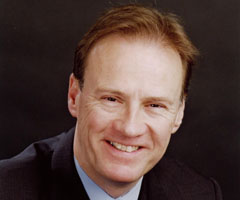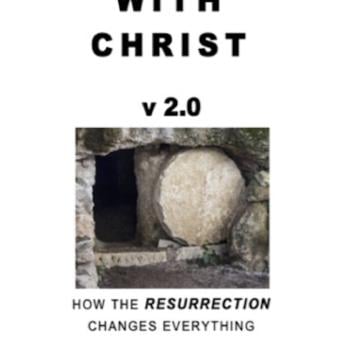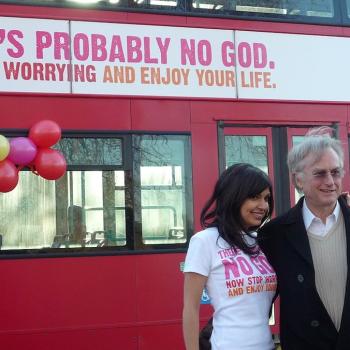It was a real privilege to speak with Liam Goligher recently, and it is a delight to now bring a report of that conversation here to my blog. Liam is a trustee of the Keswick Convention and a well-known Bible teacher. He leads Duke Street Church, an independent church in Richmond, UK which has approximately 400 members, with many more attending, making it a large church for England.
Liam is a trustee of the Keswick Convention and a well-known Bible teacher. He leads Duke Street Church, an independent church in Richmond, UK which has approximately 400 members, with many more attending, making it a large church for England.
Liam comes from a very different church background than I do. For example, he is happy to use the identification “cessationist” in a nuanced kind of way, and the style of his church meetings (which includes liturgy and more traditional music) is very different to that with which I am familiar. Yet immediately there was a mutual recognition of brotherhood in the body of Christ. Liam is clearly a man who loves Jesus and is willing to stand up for biblical truth. We spent the majority of our time discussing things about which we both agree, and my respect for him grew by the minute. I will spend this first post of the interview discussing those things where we have differing perspectives, and then move on in subsequent posts to the more vital doctrines — including, of course, the atonement — about which Dr Goligher is clearly very passionate.
Liam was eager to point out that he believes it is vital for those who he describes as “confessing evangelicals” to work together across some of the barriers that have divided them in the past. He does not, however, advocate minimising or removing all such distinctions. We operate in two spheres — the sphere of joining hands to support the Gospel and work together and the sphere of the local church. Liam spoke about the importance of realising what issues have prominence, and in our conversation those did, indeed, have prominence. He clearly believes that what Mohler calls “theological triage” is crucial. There are issues that should not prevent us from working together on a conference platform, but which within a local church may present practical difficulties. Each local church must identify where it is going to stand on these matters, and on which of them it is willing to be flexible. Liam believes, for example, that to have both cessationists and charismatics in the leadership team of a local church congregation would not be practical. On the other hand, in his own local church, considerable flexibility is given to those who differ on the mode and timing of baptism. Not every church will come to the same conclusions about where it stands on these “second-order” issues, which of them will be required for membership, and which will be prerequisites for leaders in that congregation. But, said Liam, every church must have a clear idea of its own theological and stylistic identity, and must not confuse the two. Along with theological distinctives, each congregation will be shaped to some degree by the local culture in which it exists — this will affect the stylistic choices, but obviously should not affect the theological ones. It is vital that we remember that the way we do things is not the only way they can be done — or even necessarily the best way in another context.
In his own local church, Liam felt it was crucial to introduce a firmer commitment to some of the doctrinal creeds, and to demonstrate this by a greater use of catechisms and confessions. He was intentional about defining exactly where the church stood on doctrine and where it allowed variation within its members and leadership team. He also introduced an eldership. He has sought to apply the regulative principle to worship using creeds and some reformed liturgy and confessions as teaching and worship aids, along with the best mixture of traditional and contemporary music. “We love Watts and Wesley, as well as Townend and Kauflin. Our mornings are more classical, and our evenings more jazz and contemporary.” Being based in Richmond and having a desire to reach a certain group of people who, historically, their church had not met, he also introduced some changes to their style of worship. In his desire to shape a worship service to help a certain type of person encounter God in a relevant way, Liam arrived in a very different place to others of us. Where many of us have moved to more informal services with drums, keyboards, and guitars, Liam went another way. The changes towards including liturgy in his meetings and maintaining a music style and format that was familiar to many in the area of Richmond, proved successful in encouraging people back to church. Liam is eager to stress that he, personally, can worship God in a variety of settings, and is happy to attend worship services very different to those in his local church congregation.
We discussed the specific issue of the charismatic/cessationist debate. Liam believes that this can often revolve around differences in how certain things are defined. For example, the typical charismatic and cessationist hold to very different definitions of prophecy. To Liam, these differences are often about “sloppy language,” and he is not at all concerned with where people stand on that issue when it comes to uniting with them for the purposes of defending and declaring the Gospel. Liam was anxious to point out, however — something I have begun to realise is clearly the case — that moderate cessationists like Liam are not so very far from us charismatics. As he put it, “We all want to have a dynamic living relationship with God and each other, and to experience something of God in our meetings.”
Continued in Part Two . . .












